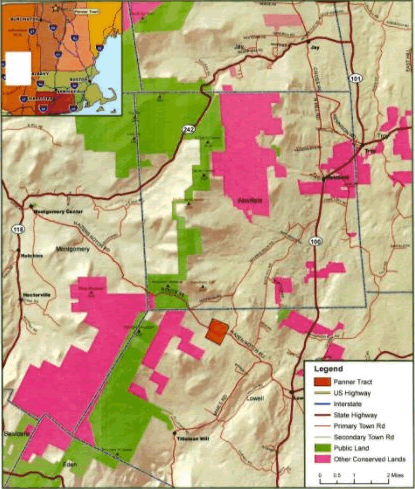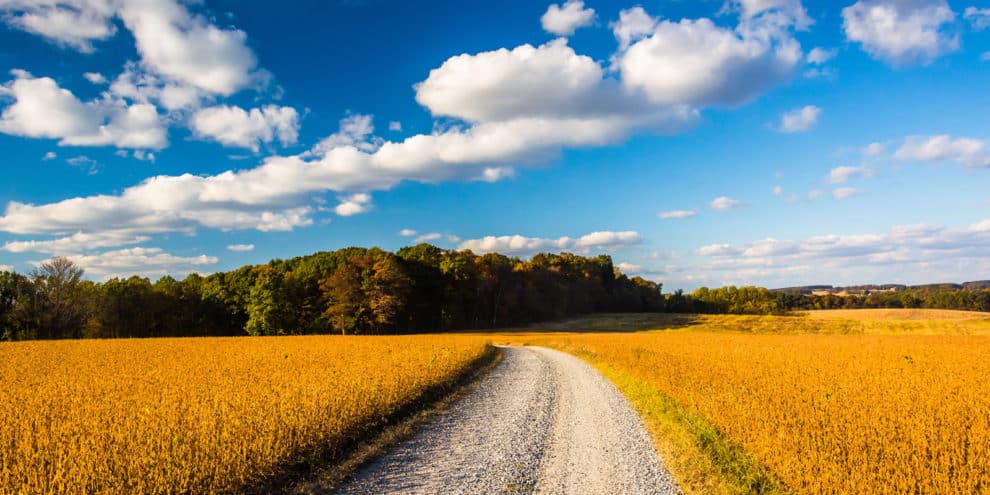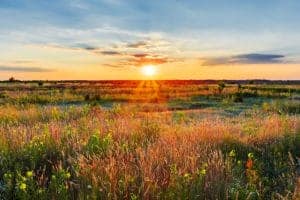When we consider acquiring a property, many folks are thinking about taking possession of the full bundle of ownership rights. However, with many types of land for sale, ownership may exclude certain rights. For example, a public entity or utility company may own a “right-of-way” through the property to accommodate a road or electric power; another owner may hold a shared access right to a road; yet another may hold water or “spring” rights. Such limits on title are known as encumbrances and are accepted by most buyers, especially if they provide power or access. Before taking title to a property, buyers have their attorney conduct a title search to uncover any third party interests in the full bundle of property rights.
So, what is a conservation easement?
A conservation easement is a special type of encumbrance that limits development, requires sustainable management of the property’s natural resources, and, sometimes, requires allowance of public access. While conservation easement language can vary, much of the language has been standardized. Conserved properties are common in the northeast where conservation organizations, state and municipal governments have cooperated for decades protecting land from development, fragmentation and unsustainable use of natural resources.
The map below is a common property locus map provided by Fountains Land. The pink areas are properties covered by a conservation easement. As you can see, easement encumbered properties are quite common in this corner of Vermont.

How does a property end up with a conservation easement?
Conservation groups (and sometimes state governments) acquire some of the bundle of ownership rights of a property and become the stewards of these rights they own in the property. In this case, they are often referred to as the “easement holder” or “grantee.” The land under the easement is often owned privately, with permitted uses identified in the easement terms held by the grantee. In these situations, the landowner, also referred to as the “grantor” and easement holder become partners in the long-term stewardship of the land.
What types of properties can be covered by a conservation easement?
All kinds – including timberland investment properties, farmland and recreational parcels. On the latter, the easement sometimes allows for a homestead right within a designated zone. The owner can build a home within this zone and still manage the remaining acres, where future development is commonly restricted, according to the easement terms. On timber investment properties, there is often no allowance for residential development; the owner (or buyer) of these properties would be focused on long-term timber investment and management goals.
Who should consider a property with a conservation easement?
For forestland properties, long-term investors who understand the terms of the easement and the management philosophy of the easement holder, can benefit by acquiring such property well below timber value. This allows the property’s investment performance to be driven solely from biological timber asset appreciation. For recreational properties, buyers who share the same conservation ethic as the easement holder are those who would manage the land similarly to the easement requirements anyway.
The availability of conserved land has been on the rise, and while contemplating such ownership requires a thorough understanding of the easement requirements, the benefits can be rewarding. Conservation properties commonly hold special resources such as rivers, lakes, alpine terrain, significant vistas, or a well-managed timber resource, which are not often available at an affordable price in the marketplace.
Written by Michael Tragner, a professional forester and timberland broker with Fountains Land who has served timberland owners and buyers in the northeast since 1989.
This content may not be used or reproduced in any manner whatsoever, in part or in whole, without written permission of LANDTHINK. Use of this content without permission is a violation of federal copyright law. The articles, posts, comments, opinions and information provided by LANDTHINK are for informational and research purposes only and DOES NOT substitute or coincide with the advice of an attorney, accountant, real estate broker or any other licensed real estate professional. LANDTHINK strongly advises visitors and readers to seek their own professional guidance and advice related to buying, investing in or selling real estate.










How can you place a value on property that is already under a strict easement?
For example, I know of some land that has an easement on it that prevents it from ever being developed, altered, or used for any commercial purpose, although it can be used for private hunting. If the owner ever sells, how can he ever put much value on the property that is under the easement? It would seem to not be totally worthless, but have little value to anyone today or in the future.
Easement encumbered lands are primarily valued based on comparable sales data of other similar encumbered land that have sold. The more strict the easement terms the greater market value will be diminished. In the example that you offer, if recreation and hunting are the only primary uses then market value would be quite low. Hope this helps, Michael Tragner
Selling a property with a conservation easement is challenging to say the least. Conservation easements are often entered into by an owner that is not contemplating selling, would like to maintain the property’s aesthetics and current utilization, and would like to receive a substantial income tax deduction under Section 170(a) and (h) of the internal revenue code. But conditions change and the owner may later decide to sell the property. At that point a knowledgeable real estate agent must try to quantify the value of the property encumbered by the Conservation Easement (CE). The best way is to compare the property to similar properties with similar easements. If there aren’t any you next look at what uses no longer exist or are limited by the CE. I recently lost a sale of a large tract because of a CE. The buyer was from outside the Continental US. I had disclosed the CE in my advertising and discussed it with him when I showed him the property. I explained that the CE would allow the uses he planned for the property. But he made the comment that one use he no longer had was to place the property under a Conservation Easement and take the income tax deduction. Then he consulted an attorney in south Florida who told him that a CE diminished the value of a property by 60%. I am sure that a CE on property in a fast growing area like south Florida does have much more impact on the value than a CE on rural recreational land in Alabama. Just remember when clients ask you should they encumber their property with a perpetual conservation easement, perpetual means forever.